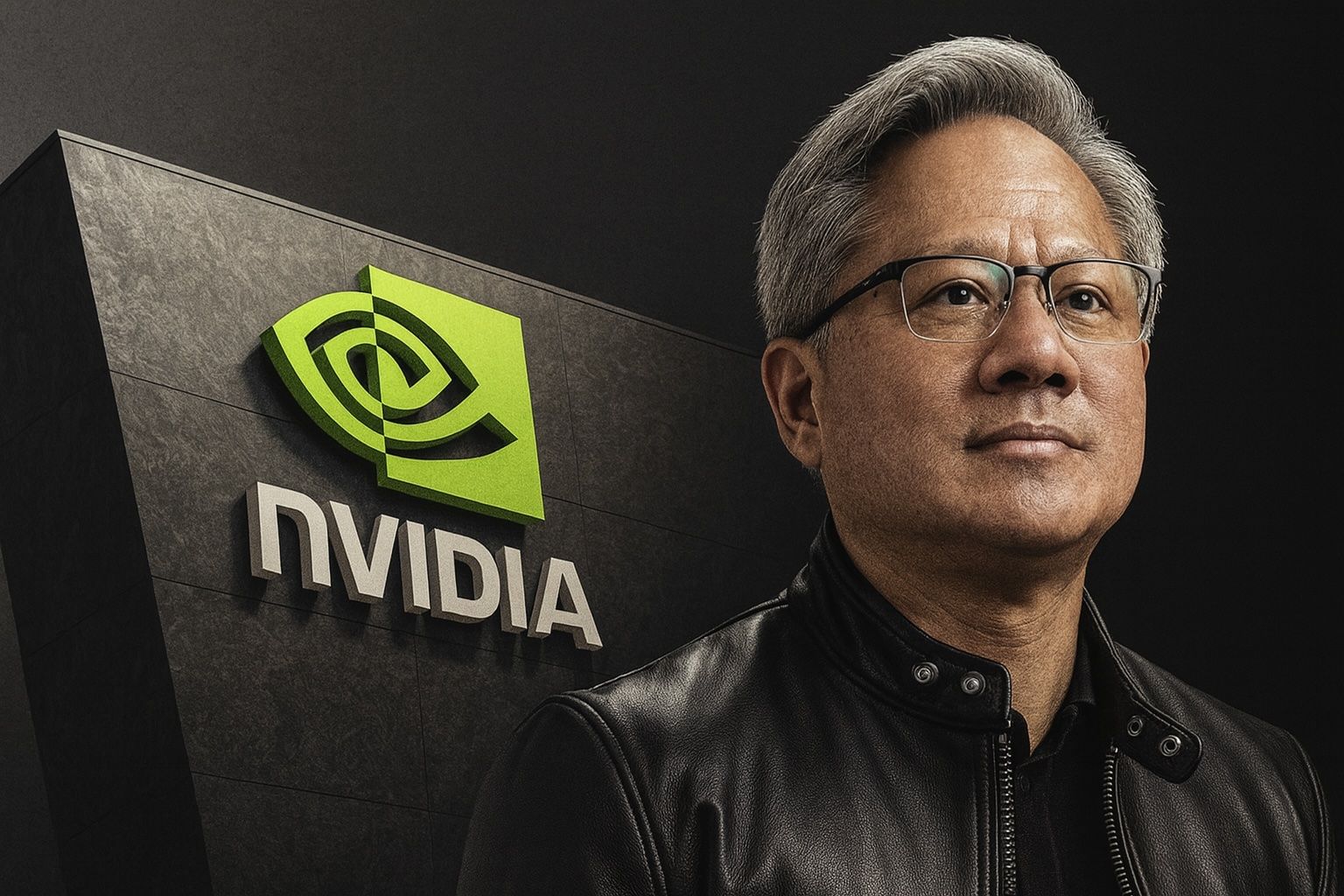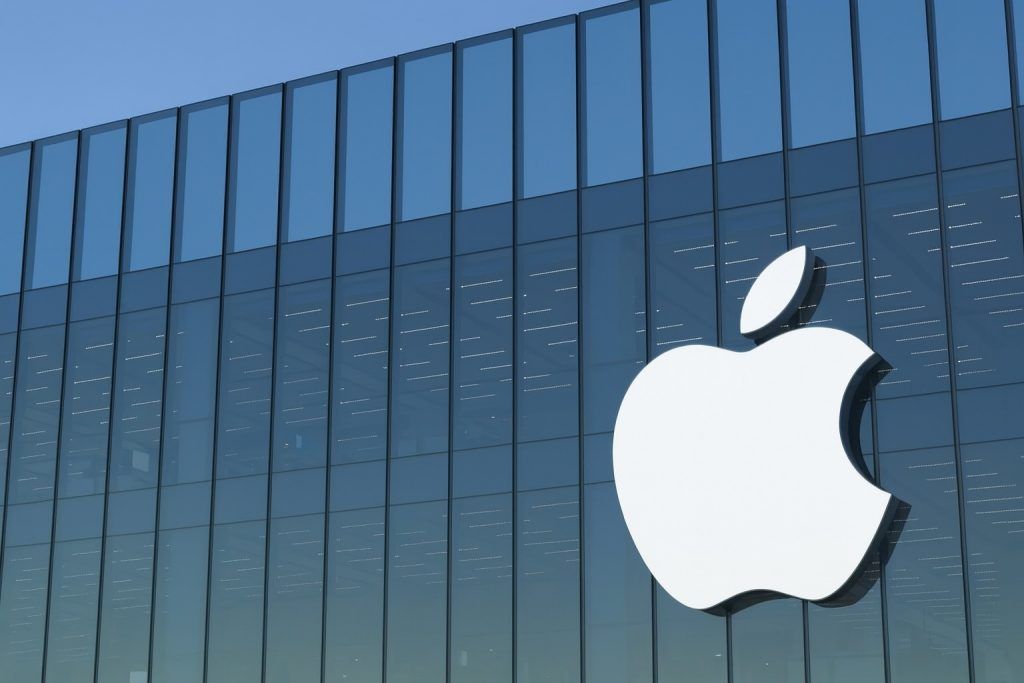- Stock Back Near $180: Nvidia (NASDAQ: NVDA) shares closed around $180 on October 14, 2025 after a 4% one-day drop amid tech sector weakness [1]. The stock had hit roughly $188 earlier in the week near all-time highs [2], before pulling back on global trade jitters and new competition news.
- AI Boom = Record Earnings: The company’s latest quarterly revenue surged 56% year-over-year to $46.7 billion with data-center sales topping $41 billion – an unprecedented jump fueled by demand for Nvidia’s AI chips [3]. Gross margins hover above 72%, and net profit margins exceed 50%, reflecting extraordinary profitability [4].
- Market Cap Dominance: Nvidia’s market capitalization has soared above $4.5 trillion – briefly making it the world’s most valuable company [5] – and dwarfing chip peers. At ~$4.4 T, NVDA is over 10× the size of AMD (~$350 B) and 30× Intel (~$150 B), underscoring its outsized leadership in the semiconductor industry [6] [7].
- Analysts Still Bullish: Wall Street remains upbeat despite valuation concerns. 38 out of 47 analysts rate NVDA a “Buy” or better, with consensus price targets in the $210–220 range [8] [9] (about 15–20% above current levels). Several firms hiked targets recently (Jefferies to $220, Loop Capital to $250), citing Nvidia’s dominance of the AI “golden wave” [10] [11].
- Key Drivers: NVDA’s stock is driven by blowout earnings, continual product launches (from data-center GPUs to new AI supercomputers), and massive partnership deals. However, regulatory risks (U.S.-China trade tensions, export curbs) and emerging competition in AI chips (e.g. AMD, Broadcom) are injecting new volatility [12] [13].
NVDA Stock Volatility After Record Run
Nvidia’s stock has been on a wild ride in recent days, reflecting its status as the market’s premier “AI play.” On Monday (Oct. 13), NVDA jumped nearly 3% intraday, extending a powerful year-to-date rally [14]. But by Tuesday Oct. 14, shares slid about 4.4% to ~$180 [15] as profit-taking set in amid wider tech weakness. The stock traded as low as $179.70 during the session [16], giving back a portion of its recent gains. Even with the pullback, Nvidia remains up dramatically over the past year (roughly +58% since Oct 2024) [17] and hovers near all-time highs. Its 50-day average price around $179 is now almost 20% above the 200-day average, reflecting the steep upward trajectory in 2025 [18].
What caused the latest dip? Investors point to geopolitical jitters and sector rotation out of high-flying tech names. This week, U.S.–China trade tensions flared anew – China’s transport ministry launched a probe into U.S. shipping practices, sparking fears of retaliation [19]. The prospect of escalating trade conflict hit chip stocks broadly, since roughly 10–15% of Nvidia’s revenue is tied to China (and restrictions on advanced chip exports have been a lingering concern). Market watchers also noted signs of overheating: Nvidia’s stock had added hundreds of billions in value in just weeks amid an “AI frenzy,” so any hint of bad news prompted a swift selloff. Notably, insiders have been trimming holdings – for example, Nvidia’s CFO sold ~$5.4 M worth of shares in September [20] – signaling some executives cashed in on the rally. All of this contributed to short-term volatility in NVDA, a stock with a beta over 2 (more than twice as volatile as the market) [21].
AI Boom Powers Record Earnings
Nvidia’s fundamental performance continues to justify much of the hype. The company is shattering records on the back of an AI computing boom. In its fiscal Q2 2026 (quarter ended July 27, 2025), Nvidia posted $46.7 billion in revenue, up 56% year-over-year [22]. This growth is almost entirely driven by explosive demand for data-center AI processors: data-center revenues hit $41.1 billion in the quarter [23] – roughly 88% of total sales – as cloud giants and enterprises raced to deploy Nvidia’s GPUs for training generative AI models. By comparison, Nvidia’s gaming and “AI PC” segment (high-end graphics chips increasingly used for AI tasks) also saw a 49% YoY jump to $4.3 B [24], signaling that AI features are boosting demand even in consumer markets.
This massive scale has made Nvidia immensely profitable. Gross margins have expanded above 72%, and net profit margins topped 50% last quarter [25] – unheard-of numbers for a hardware-centric company. In the past 12 months, Nvidia generated over $86 billion in net income [26], rivaling the annual profits of the world’s largest corporations. Free cash flow is similarly surging; analysts at Melius Research predict Nvidia could produce $600+ billion in free cash over the next 3–4 years given current trends [27]. Backed by this cash, Nvidia has rewarded shareholders – it bought back $25 billion+ in stock recently and authorized a new $60 billion repurchase program [28] (even as it keeps a modest dividend of $0.01 quarterly [29]).
Crucially, Nvidia isn’t standing still. The company continues to roll out new chips and systems to extend its AI leadership. In late September, it revealed a next-generation AI chip architecture code-named “Rubin” (for the upcoming Vera Rubin GPU) tailored for generative AI video and code applications [30]. And in early October, Nvidia unveiled the DGX Spark, billed as “the world’s smallest AI supercomputer,” aiming to let developers run advanced AI models locally [31]. These new products – from enormous data-center systems down to desk-side AI machines – show how Nvidia is pushing into every corner of the AI computing market. CEO Jensen Huang has described an ambition to embed Nvidia’s technology at every stage of AI development, from cloud training to edge deployment [32]. With Q3 FY2026 guidance calling for another record ~$54 billion in revenue (≈15% sequential growth) [33], Nvidia’s trajectory suggests the AI boom is still in its early innings for the company’s top and bottom line.
Recent News: Trade Tensions, Deals, and Sector Shifts
In the past week (Oct 11–14), several developments around Nvidia made headlines – highlighting both the catalysts and risks swirling around the stock:
- China Trade Worries: As noted, U.S.–China frictions weighed on NVDA. Reports that Beijing is scrutinizing U.S. firms (and vice versa) spooked investors, given Nvidia’s reliance on China’s market. On Oct. 14, Nvidia fell over 4% while the Nasdaq sank ~0.8%, amid fears that new U.S. export controls on AI chips or Chinese retaliation could stifle future sales [34]. Intel, which has exposure to China and had surged recently, likewise tumbled ~4% that day [35].
- Rival Chip Deals: Competition in the AI chip arena intensified. Broadcom (AVGO) announced a partnership with OpenAI to provide 10 gigawatts of AI accelerator capacity, a direct challenge to Nvidia’s grip on AI hardware [36]. This mirrors a deal Nvidia itself struck with OpenAI in September – agreeing to supply 10 GW of its cutting-edge GPU systems and invest up to $100 billion in OpenAI [37]. The Broadcom news added to investor jitters about tech giants diversifying their AI suppliers. However, analysts noted that far from “zero-sum,” the AI computing pie is rapidly growing. “If you don’t have the compute, you don’t have a chance. To that end, Broadcom, Nvidia and AMD can all win,” wrote Melius Research’s Ben Reitzes, emphasizing that demand is so high, multiple chip vendors can thrive [38].
- Nvidia’s “AI Factory” Plans: Nvidia itself spurred excitement with a bold vision for next-gen data centers. At an industry event, the company and its partners outlined “gigawatt AI factories” – essentially massive 800-volt data centers to power future AI needs [39] [40]. To enable this, Nvidia is working with power specialists on new high-voltage chip technology. In fact, a smaller company called Navitas Semiconductor (NVTS) saw its stock skyrocket ~27% in mid-October after it announced it will supply advanced power chips for Nvidia’s 800V AI data center architecture [41] [42]. The endorsement sent Navitas shares (up ~179% in 2025) surging to new highs. This underscores how Nvidia’s roadmap – in this case, revolutionizing data center power delivery – is creating ripple effects across the tech ecosystem. (Nvidia’s own blog noted that over 20 companies are already preparing components for these 800V “AI factories” [43] [44].)
- Sector Rotation: Lastly, the broader market tone is impacting NVDA. In early October, optimism around AI had helped add over $200 billion to semiconductor stocks in a matter of days [45]. By mid-October, however, rising bond yields and profit-taking led investors to rotate out of some tech winners. Wells Fargo’s strong earnings lifted bank stocks, for example, while high-valuation tech names cooled off [46] [47]. Nvidia, trading at ~51× earnings [48], is especially sensitive to these sentiment swings. Short-term traders have been actively buying Nvidia on dips – and occasionally taking profits just as quickly – contributing to seesaw action. Still, Nvidia’s status as the “AI trade” of 2023–2025 remains intact, keeping it in the spotlight of every market move.
Competition: Nvidia vs. AMD and Intel
Despite Nvidia’s commanding lead in AI, competition is ramping up from both longtime rivals AMD and Intel. Recent developments show these peers making moves – but also underscore how far ahead Nvidia remains:
- AMD’s Big OpenAI Deal: On October 6, AMD stunned the market by announcing a multi-year agreement to supply 6 GW of AI GPUs to OpenAI, the maker of ChatGPT [49]. The deal even gives OpenAI an option to take up to a 10% stake in AMD as part of the partnership [50] [51]. In response, AMD’s stock exploded 34% in one day – its largest jump in 9 years – adding about $80 billion in market value [52]. This was a huge vote of confidence in AMD’s upcoming MI300/MI450 AI chips. Analysts called it “transformative, not just for AMD, but for the industry” [53]. However, Nvidia’s dominance isn’t easy to dent. Even after the OpenAI win, AMD is expected to post ~$33 billion in revenue this year versus >$200 billion for Nvidia [54]. One strategist noted the deal “helps validate [AMD’s] technology,” but is “unlikely to dent Nvidia’s dominance, as the market leader continues to sell every AI chip it can make.” [55] Indeed, Nvidia’s own 10 GW OpenAI agreement (inked in Sept.) suggests demand far outstrips any single supplier’s capacity. Nvidia’s share price dipped just ~1% on the AMD news [56], implying investors see the AI market as Nvidia’s to lose.
- Intel’s Resurgence and Reality Check:Intel – the PC chip giant – has also ridden the AI hype, but faces a more complex narrative. Intel’s stock rallied nearly 80% in 2025 through mid-October [57], thanks in part to optimism that it could play catch-up in the AI race. Over the summer, the U.S. government took a stake in Intel to bolster domestic chipmaking [58], and in September Intel announced a partnership with Nvidia [59]. (Notably, Nvidia agreed to invest ~$5 billion for a ~4% stake in Intel, aiming to co-develop cutting-edge PC and data-center chips together [60]. This unprecedented collaboration is seen as a potential lifeline for Intel and a way for Nvidia to ensure more chip supply – but it also blurs the lines between rivals.) Buoyed by these developments, Intel’s shares climbed into the mid-$30s, and there was even speculation of future deals with the likes of Apple or others [61]. However, Intel received a sharp reality check on Oct. 14: Bank of America downgraded Intel to “Underperform”, warning the stock had run “too far, too fast” and lacks an actual competitive AI product lineup [62] [63]. Intel’s fundamentals “remain challenged with no discernible AI portfolio/strategy,” the analysts argued, suggesting the recent rally was driven more by hope than execution [64]. Intel shares promptly fell ~5% on the news, underscoring skepticism about its turnaround. In short, while Intel is making strategic moves (including heavy investment in chip manufacturing and foundry services), it remains well behind Nvidia in the lucrative AI accelerator arena. Nvidia’s GPUs still power 90%+ of new AI servers, and competitors – whether it’s Intel’s nascent Gaudi accelerators or Google’s in-house TPUs – have yet to make a major dent [65] [66].
- Nvidia’s Edge: It’s worth noting that Nvidia’s competitive moat extends beyond raw chip performance. The company’s software ecosystem (CUDA, AI libraries) and developer community give it a “sticky” advantage that rivals struggle to match [67]. Many AI researchers are trained on Nvidia platforms, and switching costs are high. This dynamic is why Wall Street largely views Nvidia as ahead of the pack for years to come, even as AMD, Intel, and others fight for second place. Loop Capital recently called Nvidia the “leader of the generative-AI golden wave,” asserting that its scale and integration (spanning chips, systems, and software) make it uniquely positioned to capitalize on the AI revolution [68]. Still, competition is clearly heating up – which could pressure Nvidia’s pricing power in the future or force it to invest even more heavily (as seen with the OpenAI $100B commitment) to retain key customers. For now, though, Nvidia’s rivals appear to be chasing a moving target as it continues to break new ground.
Investor Sentiment and Forecast
Looking ahead, the sentiment around Nvidia remains broadly positive – but with a cautious undercurrent given the sky-high expectations. On Wall Street, Nvidia is still a consensus favorite: the company carries a “Strong Buy” or equivalent rating from the vast majority of analysts, and the average price targets in the low $200s imply further upside [69] [70]. Bulls argue that Nvidia’s growth story is unprecedented – the company is on track to surpass $200 billion in annual revenue this fiscal year [71] (a milestone reached in a stunning timeframe), and demand for AI compute power is only set to increase. CEO Jensen Huang recently noted that global spending on data-center infrastructure could climb from ~$600 B in 2025 to $3–4 trillion by 2030, driven largely by AI workloads [72]. If Nvidia can maintain even a decent share of that buildout, its long-term outlook is enormous. Some analysts foresee Nvidia maintaining ~90% of the AI chip market, translating to eye-popping financial outcomes: one estimate suggests Nvidia could generate $1.17 trillion in revenue and $583 B in profit by 2030 if it holds its dominance [73] [74]. That would imply a market cap well into the double-digit trillions – emphasizing just how much growth is already “priced in” by investors today.
At the same time, voices of caution are growing louder. The stock’s valuation multiples (around 53× trailing earnings, 33× forward [75]) leave little margin for error. Any hiccup in execution or demand could spur a sharp correction – as evidenced by the swift 4% drops on any hint of bad news. Even some Nvidia insiders have taken money off the table; over the past year insiders sold over $1 billion in stock, including CEO Jensen Huang unloading shares when the stock hit records [76]. There are also macroeconomic and regulatory wildcards. The U.S. government is reportedly contemplating tighter export restrictions on advanced AI chips to China – which could cap Nvidia’s sales in a key market. Meanwhile, China has launched probes into GPU suppliers and is investing heavily in indigenous chip projects, aiming to reduce reliance on Nvidia [77]. Additionally, the sheer power consumption of Nvidia’s AI hardware is drawing scrutiny; analysts warn that scaling these systems could be constrained by energy and cooling requirements (the so-called “power problem”) [78] [79]. And in an era of tech antitrust concerns, Nvidia’s near-monopoly in AI silicon has even prompted talk of regulatory intervention – TIME magazine opined that authorities may eventually need to “break up ‘Big AI’” if a few companies (like Nvidia via its OpenAI ties) concentrate too much control [80].
Investor sentiment reflects this mix of enthusiasm and caution. Large institutional investors largely remain overweight NVDA, given its pivotal role in AI and its hefty weighting in indexes. But many are hedging against volatility. On the retail side, Nvidia is a trading phenomenon: it’s among the most popular holdings on platforms like Robinhood, and retail demand is so intense that by 2025 a slew of single-stock ETFs were created just to let traders leverage or short Nvidia [81]. (In fact, 14 different ETFs now track Nvidia’s stock – the second-most of any company, behind only Tesla – reflecting how much “buzz” surrounds NVDA in the trading community [82].) This retail fervor cuts both ways: it can amplify rallies (as fear of missing out kicks in) but also exacerbates sell-offs when sentiment shifts. As one market strategist quipped, “For better or worse, Nvidia has become a must-own stock for both Main Street and Wall Street” – meaning its daily price swings often mirror broader market emotion about tech.
The Road Ahead
Going forward, most experts agree Nvidia’s core business momentum remains strong. The upcoming earnings report (due next month) will be closely watched to see if Nvidia can once again outperform its own ambitious guidance. New product launches (like the next-gen “Vera Rubin” GPU slated for 2026 [83]) and big customer deployments (such as cloud providers building giant AI supercomputers) should continue to drive growth. The company’s recent moves – investing in OpenAI, partnering with Intel, building AI data centers in partnership with governments – all suggest Nvidia is playing both offense and defense to secure its future. That said, investors should brace for continued high volatility. NVDA is trading in uncharted territory in terms of valuation, and it sits at the crossroads of multiple sensitive issues (AI hype, U.S.-China relations, tech regulations). Sudden shifts in any of those areas could whipsaw the stock, as this week’s action showed.
In summary, Nvidia stands in October 2025 as the undisputed leader of the AI era, with financial results to match its reputation. The company’s valuation – $4.5 trillion – reflects expectations that it will continue to dominate the nascent AI hardware market. “Nvidia in October 2025 is the undisputed leader in AI computing,” notes one TechStock² analysis, citing its commanding data-center GPU share and robust growth, “however, investors should weigh valuation risk, energy constraints, and regulatory headwinds” before assuming the ride will be smooth [84]. For now, Nvidia’s stock remains a high-flyer with a strong tailwind: the AI gold rush that it helped ignite. The coming months will reveal whether NVDA can keep defying gravity or if some gravity will finally catch up to this AI juggernaut.
Sources: Financial media and analyst reports [85] [86] [87] [88] [89], company disclosures, Reuters and TS² Tech analysis [90] [91]. All information is as of Oct. 14, 2025.
References
1. www.investopedia.com, 2. ts2.tech, 3. ts2.tech, 4. ts2.tech, 5. ts2.tech, 6. www.reuters.com, 7. ts2.tech, 8. www.marketbeat.com, 9. www.marketbeat.com, 10. www.marketbeat.com, 11. ts2.tech, 12. www.investopedia.com, 13. www.tipranks.com, 14. www.tipranks.com, 15. www.marketbeat.com, 16. www.marketbeat.com, 17. ts2.tech, 18. www.marketbeat.com, 19. www.tipranks.com, 20. www.marketbeat.com, 21. ts2.tech, 22. ts2.tech, 23. ts2.tech, 24. ts2.tech, 25. ts2.tech, 26. ts2.tech, 27. ts2.tech, 28. ts2.tech, 29. www.marketbeat.com, 30. ts2.tech, 31. www.tipranks.com, 32. www.tipranks.com, 33. ts2.tech, 34. www.investopedia.com, 35. www.investopedia.com, 36. www.tipranks.com, 37. www.tipranks.com, 38. www.tipranks.com, 39. ts2.tech, 40. ts2.tech, 41. ts2.tech, 42. ts2.tech, 43. ts2.tech, 44. ts2.tech, 45. ts2.tech, 46. www.investopedia.com, 47. www.investopedia.com, 48. www.marketbeat.com, 49. ts2.tech, 50. ts2.tech, 51. www.reuters.com, 52. www.reuters.com, 53. www.reuters.com, 54. www.reuters.com, 55. www.reuters.com, 56. www.reuters.com, 57. www.investopedia.com, 58. www.investopedia.com, 59. www.investopedia.com, 60. ts2.tech, 61. www.investopedia.com, 62. www.investopedia.com, 63. www.investopedia.com, 64. www.investopedia.com, 65. ts2.tech, 66. ts2.tech, 67. www.tipranks.com, 68. ts2.tech, 69. www.marketbeat.com, 70. www.marketbeat.com, 71. ts2.tech, 72. ts2.tech, 73. ts2.tech, 74. ts2.tech, 75. ts2.tech, 76. ts2.tech, 77. ts2.tech, 78. ts2.tech, 79. ts2.tech, 80. ts2.tech, 81. www.etf.com, 82. www.etf.com, 83. www.reuters.com, 84. ts2.tech, 85. www.investopedia.com, 86. ts2.tech, 87. ts2.tech, 88. www.marketbeat.com, 89. www.tipranks.com, 90. www.reuters.com, 91. www.etf.com







